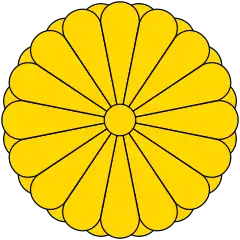| Part of a series on |
| Conservatism in Japan |
|---|
 |
The Red Scare in Japan refers to the promotion of fear of the rise of communism or radical leftism in Japan.
Throughout the history of Imperial Japan, the government suppressed socialist and communist movements.[1] In order to combat the Communist International, Japan signed the Anti-Comintern Pact with Germany and Italy in Nov. 6, 1937.[2]
Near the end of World War II, Prince Konoe Fumimaro promoted the fear of a communist revolution as a result of Japan's defeat.[3]
In response to Cold War tensions in Asia, the CIA funded the Japanese Liberal Democratic Party in an effort to turn Japan into a bulwark against communism during the 1950s and 1960s.[4]
See also
Further reading
- Tetsuya Kataoka (1991). The Price of a Constitution: The Origin of Japan's Postwar Politics. Taylor & Francis. p. 28.
- Richard H. Mitchell (1992). Janus-Faced Justice: Political Criminals in Imperial Japan. University of Hawaii Press. pp. 153–154.
External links
- Interview with Richard B. Finn. The Association for Diplomatic Studies and Training Foreign Affairs Oral History Project. April 8, 1991. pp. 24–25.
References
- ↑ Elise K. Tipton (1990). The Japanese Police State: The Tokkô in Interwar Japan. University of Hawaii Press.
- ↑ "Anti-Comintern Pact". Encyclopædia Britannica.
- ↑ Jun'ichiro SHOJI (1 September 2010). Konoe Fumimaro and Konoe's Memorial to the Throne in February 1945 Japan's Wartime Diplomacy and the Postwar Visions. National Institute for Defense Studies.
- ↑ "C.I.A. Spent Millions to Support Japanese Right in 50's and 60's". New York Times. October 9, 1994.
This article is issued from Wikipedia. The text is licensed under Creative Commons - Attribution - Sharealike. Additional terms may apply for the media files.